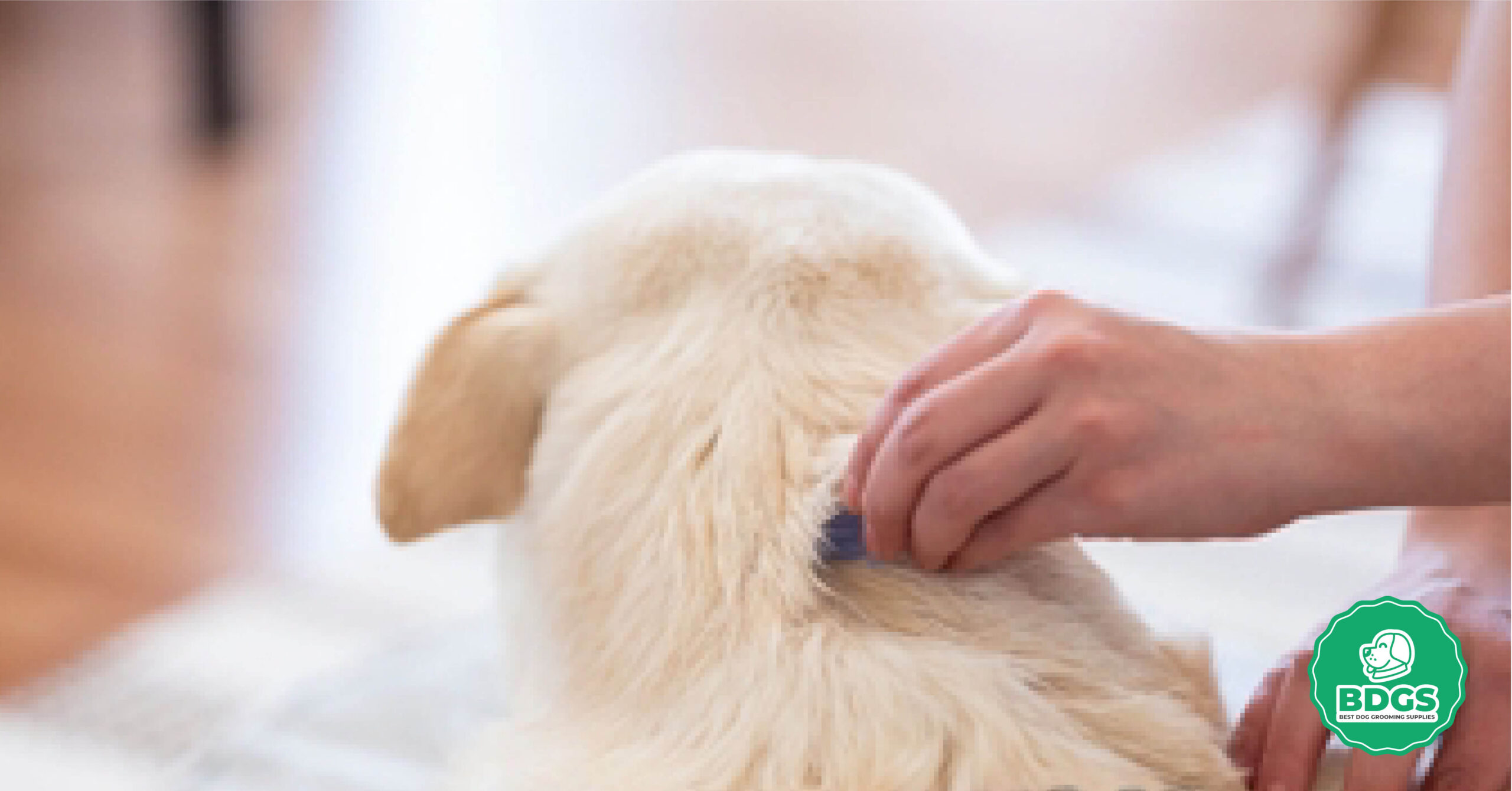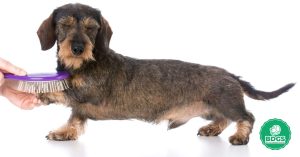Introduction to Flea Treatment for Dogs
Flea treatment for dogs is essential to pet care, as it protects our pets from these annoying parasites. Fleas not only cause itching and discomfort in pets but can also contribute to more significant health problems such as allergies and infections.
Flea treatment for dogs have different options include topical treatments, oral pills, and collars; all meant to combat flea infestations efficiently. Their demands and health circumstances determine the best treatment for your dog. Regular flea management is critical for your dog’s health, ensuring they are happy, healthy, and comfortable.
The Vital Role of Flea Prevention in Canine Care
Here is everything you need to know about treating fleas on your beloved dog. As a dog owner, your dog’s health is the most important thing to you, and getting rid of those pesky fleas is part of keeping them healthy.
Fleas are not only a bother; they can also make you sick by making your skin itch and giving you infections or even diseases. We’ll explain why being careful about flea control is essential to caring for a dog.
Understanding Flea-Related Health Issues
Before getting into treatment, let’s discuss the “why” behind the fight. Fleas can make dogs sick in many ways, such as by giving them flea allergy rashes, tapeworms, and, in the worst cases, anaemia.
Itching and scratching all the time can cause hair loss and skin diseases, so getting rid of fleas quickly and effectively is essential for your dog’s health and comfort.
Understanding the Flea’s Life Cycle
The Four Stages of Flea Development
To get rid of fleas properly, you must know how they live. This cycle has four steps: the egg, the larva, the pupa, and the adult. Stop an invasion before it gets too bad by following the process at different times. This part will discuss each step and how it adds to the flea population in your home.
Flea Eggs: The Start of the Infestation
There are very few flea eggs, but they can cause much trouble. They are put on your dog but are likely to fall off and land on rugs, beds, or anywhere else your dog spends time. Cleaning often can help get rid of these eggs before they hatch.
Larvae: Flea Babies in Your Carpets
When the larvae hatch, they hide in rugs and furniture to avoid light and eat organic matter. Because they’re hard to see, treating the surroundings is essential to removing fleas.
Pupae: The Cocoon Stage
Before they bite as adults, fleas go through this stage of defence. Pupae can stay dormant for weeks or months while they wait for the right conditions to appear. This stage is hard to treat, so keeping fleas away is essential.
Adult Fleas: The Biting Stage
You can see adult fleas the best because they live on your dog and feed on blood. Most treatments work on getting rid of fleas at this stage. But remember that hundreds of eggs, larvae, and pupae could be hiding in your home for every adult flea you see.
Choosing the Right Flea Treatment for Dogs
Factors to Consider for Flea Prevention
Consider a few things when choosing a flea treatment for dogs to ensure you get the best one for your pet. It’s essential to assess how well the product works, how safe it is for your pet and family, and how easy it is to use.
Vet-Approved Flea Treatments
Most of the time, pet owners choose flea treatments approved by a vet. Professionals have tried and cleared these items, so you can be sure they are safe and valuable for your pet.
Safety First: FDA-Approved Products
The FDA has ensured that flea medicines are safe and effective by putting them through many tests. “Natural” methods might sound good, but they might not work as well and could be dangerous. Stay away from banned items to feel safe.
Types of Flea Treatments for Dogs
To get rid of fleas effectively, you need to know about the different kinds of treatments out there. This article talks about the most popular types so you can choose the best one for your pet.
Oral Flea Treatments: Pills and Chews
Andal flea medicines, like pills and chews, are given to your dog by mouth and kill fleas when they bite. Some people find it easier to use these treatments than skin products, and they are less likely to come off when you bathe.
The Benefits of Oral Flea Medication
Oral flea medicines can keep dogs safe from fleas for a month, and they are often better for dogs that get baths or swim a lot. People know they work well to break the flea life cycle and can start working in hours.
Topical Flea Treatments: Spot-on Solutions
When you use topical flea therapy on your dog, you put solutions right on his skin, usually between his shoulder blades. Because they spread over the body’s oils, they keep fleas away for up to a month.
Correct Application of Topical Treatments
It’s important to use oral treatments correctly to ensure they work. It means putting the medicine somewhere your dog can’t lick and ensuring it works right. Always follow the directions that come with the product.
Flea Collars: A Wearable Solution
Flea bands are an easy way to keep fleas away. Over several months, they release poisons that keep fleas away or kill them. For busy pet parents, they are a good “set it and forget it” option.
Choosing the Right Flea Collar
Look for a flea collar that fits your dog’s size and type and will keep fleas away for the long time you want. Some collars don’t get wet, which is excellent for dogs that like to be busy.
Selecting the Right Flea Treatment
There are so many flea treatments that it can take time to pick the right one. Here are some tips to help you choose a treatment that fits your dog’s health needs and lifestyle.
Assessing Your Dog’s Needs and Lifestyle
When picking a flea cure for your dog, consider its size, age, health, and how it lives. Some dogs, like young puppies, older dogs, and dogs with health problems, may need extra care.
Tailoring Flea Treatment to Your Dog
How you treat fleas on your dog should be different for each one. A customized method makes sure that your dog gets the safety it needs without being exposed to drugs or the risk of side effects that aren’t necessary.
The Best Flea Treatments Available
Now, look at some of the best flea treatments tested by experts and used by dog owners worldwide.
Top Picks for Flea and Tick Medications
Following the advice of veterinarians and tests, NexGard, Frontline, and Advantage are some of the best flea and tick medicines on the market.
Spotlight on Flea Treatment Brands
Each brand has preparations like pills to take by mouth or treatments to put on the skin. We’ll discuss the most important things to help you choose the best one for your dog.
Application of Flea Treatments
The right way to use flea medicines is significant for their success. For each type of treatment, here’s how to ensure you’re doing it right.
Administering Oral Flea Medications
It’s usually easy to give oral medicines. Many of them come in tasty forms that dogs like, but it’s essential to ensure your dog eats the whole dose for it to work.
Tips for Giving Your Dog Oral Treatments
If your dog doesn’t want to take their medicine, try putting it in a treat or mixing it with their food. Keep an eye on them to ensure they don’t throw it up or leave it unfinished.
Applying Topical Flea Treatments
When you put topical treatments on your face, you must take them correctly.
Step-by-Step Guide to Topical Application
- Make sure the fur on your dog is dry.
- Cut the hair in half to show the skin.
- To get the treatment to work, put it on the skin instead of the fur.
- Do not let your dog swim or bathe until the treatment dries.
Using Flea Collars Correctly
Flea collars are meant to be worn for a long time because they release chemicals over time that keep fleas away or kill them.
Ensuring Optimal Effectiveness of Flea Collars
- Ensure you can fit two fingers under the collar when tightening it.
- Cut off any extra length so your dog can’t chew on it.
- Check the collar often for signs of wear or soreness.
Safety and Precautions
It is just as important to use flea medicines safely as it is to pick the right ones. Today, we will talk about how to keep your dog and family safe.
Understanding Flea Treatment Safety
Following treatment instructions and knowing about possible side effects is very important. Always read the label and carefully follow the directions.
Recognizing and Managing Side Effects
- After the treatment, watch your dog for any strange signs or behaviour.
- Tell your doctor right away about any harmful effects.
- Keep medicines out of the reach of kids and pets.
Home and Environmental Flea Control
Getting rid of fleas is more than just treating your dog. Fleas can live in your yard and home, so let’s talk about how to get rid of them there.
Cleaning Strategies for Flea Infestations
Fleas can be significantly reduced in your home by regularly cleaning it. To get rid of fleas and their eggs, vacuum your dog’s blankets and toys often and wash them in hot water.
Natural and Chemical Environmental Treatments
- Put diatomaceous earth or borax in your rugs to kill fleas and dry out their bodies.
- If you have a lot of pests, consider hiring a professional pest control service.
- Follow all the safety rules that come with flea sprays or foggers that are made for home use.
When to Consult a Veterinarian
There are a lot of over-the-counter flea treatments, but sometimes, you need to talk to an expert.
Recognizing the Signs for Professional Help
You should talk to your vet if your dog has a severe bug problem, has an allergic reaction, or is unsure of the best treatment.
The Role of Your Veterinarian in Flea Treatment
- Vets can offer prescription-strength treatments not available in stores.
- They can provide tailored advice based on your dog’s specific health needs.
- Vets can help you formulate a comprehensive flea control plan.
Seeking Advice for Flea Treatment and Prevention
Your vet is a valuable resource for treating fleas and advising on long-term prevention strategies.
Developing a Flea Prevention Plan with Your Vet
- Vets can give prescription-only medicines that you can’t get in shops.
- They can provide you with information unique to your dog’s health needs.
- Vets can help you develop a complete plan to get rid of fleas.
Conclusion: Ensuring a Flea-Free Future for Your Dog
To wrap up, let’s go over the most important things you need to know about flea treatment and protection to keep your dog healthy and happy.
Recap of Flea Treatment Strategies
Getting rid of fleas is a constant process. It is possible to keep your dog flea-free if you know how fleas live, choose the right medicine, apply it properly, and keep the area clean.
Final Thoughts on Canine Flea Control
Fleas are always a problem, but you can keep them away from your dog if you know what to do and have the right tools. Remember to be careful, check your dog for fleas often, and don’t be afraid to get help from a professional.
Celebrating a Flea-Free Life with Your Dog
You can have a great life with your dog without the pain and dangers of fleas if you work hard and care. I wish you and your pet friend many happy and healthy years!
Frequently Asked Questions
Most Effective Flea Treatment for Dogs:
Topical Treatments (Spot-Ons): Frontline Plus, Advantage II, and K9 Advantix II are products on your dog’s skin that kill and keep fleas and ticks away. Usually, they protect you for one month.
Oral Medications: Dogs can take pills like NexGard, Bravecto, and Comfortis, which can protect them for up to three months. In a few hours, they start killing fleas and do a great job of ending the flea life cycle.
Flea Collars: Some collars, like the Seresto collar, give off chemicals that keep fleas away or kill them over time. They can be an easy way to keep fleas away all the time.
Fast-Acting Oral Flea Treatments: Medicines like Capstar are known to kill fleas on dogs within 30 minutes of being taken.
Flea Shampoos and Powders: Flea shampoos and powders can kill fleas immediately, but they might not work for long, so they work best when used with other treatments.
The best method is to eliminate fleas immediately and keep them away for good. For example, you might use a quick-acting product to feel better and follow up with a long-term prevention, like a spot-on treatment or an oral drug. It’s also essential to clean the area around your dog, such as his furniture, rugs, and yard.
reat Your Dog: To get rid of fleas on your dog, use a flea medicine that your vet recommends.
Clean House: Vacuum the rugs and furniture often and well. Wash your dog’s bedding in hot water to remove fleas and dry it on high heat.
Environmental Control: Use safe sprays or foggers inside and aim for places where fleas and their eggs will likely hide.
Consistent Prevention: To keep fleas away, treat your home and pet once a month after the first treatment.
Professional Pest Control: If the problem is terrible, you may need to hire a pest control service to come out and treat your house.




